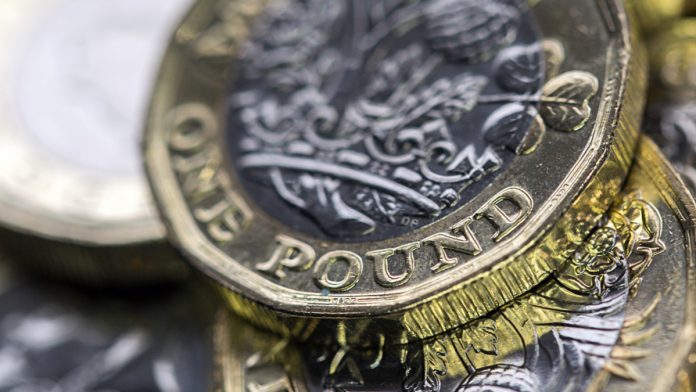Brexit optimism and solid UK jobs data boosted the pound over 1% higher on Tuesday. The pound US dollar rallied through US$1.30 to close at $1.3060. This is the strongest level that the pound has traded at versus the dollar since the beginning of February.
| What do these figures mean? |
|---|
| When measuring the value of a pair of currencies, one set equals 1 unit and the other shows the current equivalent. As the market moves, the amount will vary from minute to minute.For example, it could be written:1 GBP = 1.28934 USDHere, £1 is equivalent to approximately $1.29. This specifically measures the pound’s worth against the dollar. If the US dollar amount increases in this pairing, it’s positive for the pound. Or, if you were looking at it the other way around:1 USD = 0.77786 GBPIn this example, $1 is equivalent to approximately £0.78. This measures the US dollar’s worth versus the British pound. If the sterling number gets larger, it’s good news for the dollar. |
The pound moved higher across the previous session, lifted by a combination of strong jobs data and hopes of a softer Brexit. UK jobs data showed that the UK labour market was showing resilience as Brexit nears.
UK unemployment remained steady at historically low levels of 4%. Employment levels moved higher increasing by 167,000 ahead of the 140,000 that analysts had forecast. UK average weekly earnings also grew 3.4% year on year in the three months to December. This is a continuation of the solid growth that was seen in November.
These impressive figures show that Brexit has not negatively impacted the UK jobs market in the same way that it has other areas of the economy. This pleased UK investors. However, given the recent announcements from Nissan and Honda, which are looking to pull manufacturing from the UK post Brexit, the strong figures may not last post Brexit.
| How does strong jobs data boost the currency? |
|---|
| It works like this, when there is low unemployment and high job creation, the demand for workers increases. As demand for workers goes up, wages for those workers also go up. Which means the workers are now taking home more money to spend on cars, houses or in the shops. As a result, demand for goods and services also increase, pushing the prices of the goods and services higher. That’s also known as inflation. When inflation moves higher, central banks are more likely to raise interest rates, which then pushes the worth of the currency higher. |
Brexit optimism was once again lifting the pound higher, as UK Prime Minister Theresa May heads back to Brussels to speak to European Commissioner President Jean-Claude Juncker. Mr Juncker has continued to insist that there will be no softening of stance from the EU. However, pound traders are increasingly optimistic that Theresa My focusing on a time limit to the Irish backstop arrangement could see some success.
All Eyes On The Fed
The dollar was broadly out of favour in the previous session. As sentiment improved following progress in US — Sino trade talks the dollar dropped. This is because the dollar is the reserve currency of the world. In times of geopolitical tensions investors buy into the safe haven properties of the dollar. In times of easing tensions the lure of the dollar fades.
Today investors will look towards the release of the Federal Reserve minutes from the January meeting. The Federal Reserve adopted a significantly more cautious approach in January towards monetary policy. Investors will be keen for the Fed to shed further light on the abrupt change of approach.
| Why do raised interest rates boost a currency’s value? |
|---|
| Interest rates are key to understanding exchange rate movements. Those who have large sums of money to invest want the highest return on their investments. Higher interest rate environments tend to offer higher yields. So, if the interest rate or at least the interest rate expectation of a country is relatively higher compared to another, then it attracts more foreign capital investment. Large corporations and investors need local currency to invest. More local currency used then boosts the demand of that currency, pushing the value higher. |
This publication is provided for general information purposes only and is not intended to cover every aspect of the topics with which it deals. It is not intended to amount to advice on which you should rely. You must obtain professional or specialist advice before taking, or refraining from, any action on the basis of the content in this publication. The information in this publication does not constitute legal, tax or other professional advice from TransferWise Inc., Currency Live or its affiliates. Prior results do not guarantee a similar outcome. We make no representations, warranties or guarantees, whether express or implied, that the content in the publication is accurate, complete or up to date. Consult our risk warning page for more details.
This article was initially published on TransferWise.com from the same author. The content at Currency Live is the sole opinion of the authors and in no way reflects the views of TransferWise Inc.





